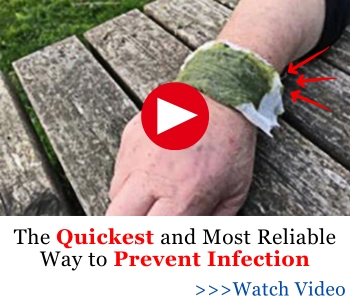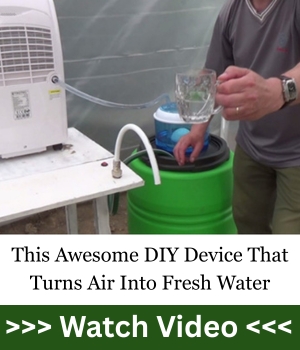Every major crisis starts the same way: the shelves stay full of junk food while the essentials disappear first. And nothing vanishes faster than feminine hygiene products. People do not talk about it, the news ignores it, and companies pretend every shortage is just a temporary hiccup in the “global supply chain.” That phrase is corporate language for “we control it and you depend on it.” Which is exactly why learning how to make feminine hygiene products at home is not only possible, it is strategic.
Related: 5 Foods That Disappear First In A Crisis (VIDEO)
Homemade feminine hygiene has existed far longer than the disposable industry ever has. It is older than modern marketing, older than the plastic era, older than the idea that something natural is somehow less effective. When you learn how these products were made for generations, you realize how unnecessary the dependency system really is. That is the heart of preparedness: knowing how to continue functioning even when corporations cannot.
When you strip away the packaging and glossy branding, feminine hygiene comes down to three things: absorbency, breathability, and comfort. And those are things you can create at home with materials you already understand and control. This is not about becoming crafty. It is about refusing to let something as personal as hygiene become a hostage to a fragile world.
Why Homemade Feminine Products Matter Now More Than Ever
People assume shortages are random. A coincidence. A temporary weakness in an otherwise “reliable system.” But look at any emergency timeline and you will notice the same pattern. The items people cannot afford to run out of become unavailable first. Not because they are hard to produce but because they are profitable to manipulate. Feminine hygiene products fetch high margins, so they are always the first sacrificial lamb in a supply chain crisis.
Homemade alternatives cut that dependency completely. You decide what materials touch your skin. You decide the size, softness, and absorbency. You decide how many you need and when to make more. You are no longer limited by what a corporation decides to produce that quarter. And once you learn the process, you start to recognize how intentionally over complicated the commercial versions are made to look.
Independence also matters for long term preparedness. People who can meet their own essential needs do not panic when stores empty. They do not fight for scraps in aisles. They do not rely on governments to deliver “hygiene kits” that never arrive on time. Self reliance is the difference between being swept up in chaos and navigating it calmly.
The Safest Homemade Option: Reusable Cloth Pads
Reusable cloth pads are the simplest, safest and most effective homemade solution out there. They were the global standard for centuries, and millions of women still use them today. All you need is soft cotton or flannel for comfort, an absorbent inner layer such as terry cloth or cotton fleece, and a leak-resistant base like tightly woven cotton or PUL fabric. These layers form a pad that is breathable, washable and long lasting.
Once you understand how these layers work together, the rest becomes personal preference. Do you want them thicker, thinner, wider or contoured? Do you want them to snap around underwear or fold into place? The homemade approach allows total customization. It lets you build a supply that actually fits you, not the generic “one size fits most” approach commercial brands rely on.
Cloth pads care for your body in a way disposables simply cannot. There are no chlorine bleaches, no synthetic fragrances, no plastic fibers. Just soft fabric that lets your skin breathe naturally. They also last years when cared for properly, which means every pad you make is a long term investment in both comfort and independence. And once you have a full set, the panic that normally comes with running low on disposables disappears completely.
Emergency Only Options When Things Get Really Bad
There will be times when emergencies hit so fast that even the best prepared households need immediate, improvised solutions. Floods, storms, blackouts and evacuations can separate you from your supplies in a single moment. In situations like these, quick external-use substitutes can be the difference between crisis and stability. Clean cotton towels, old T-shirts, or cloth diaper inserts can be folded and used until conditions return to normal.
These improvised options are not glamorous, but they work. They can be folded into layers for absorbency, wrapped securely, and changed as needed. In survival situations, comfort is a luxury. Hygiene is not. Something simple and clean is more valuable than any commercial product you cannot access. If water is available, they can be rinsed and dried. If water is scarce, they can be rotated and sun-dried to reduce bacterial load.
Improvised solutions also highlight the importance of planning ahead. When people are forced to use makeshift materials, it is rarely because they lacked skill. It is because they lacked time. The more you learn now, the less scrambling you face later. Emergencies reward the prepared, not the optimistic.
Why Big Brands Hope You Never Learn This
When you discover how easy it is to make your own feminine hygiene products, something becomes unmistakably clear. The industry is built on keeping people dependent. Disposable products are not sophisticated technology. They are basic materials packaged in a way that hides their simplicity. The moment people realize how unnecessary that dependency is, the entire foundation of their business model starts to crack.
Homemade solutions rob them of recurring profit. You make yours once. They want you buying every single month. Homemade products do not require chemical additives, perfumes, “moisture wicking” synthetics or anything else companies use to justify their price tags. They are simple, clean and based on common sense. That is the kind of simplicity corporations cannot monetize.
And when you can provide for yourself, you stop participating in the panic cycle that companies quietly profit from. Self reliance is the one thing the system has no control over. Which is exactly why it is your strongest asset.
Real Preparedness Means Real Independence
Learning how to make feminine hygiene products at home is not about crafting. It is not about nostalgia. It is about control. When you rely on stores, you rely on supply chains. When you rely on supply chains, you rely on corporations. And when the world shakes, those corporations do not rush to help you. They rush to protect their profits.
Homemade solutions put your comfort, safety and stability back in your hands. They eliminate the fear of shortages. They eliminate the stress of rising prices. They eliminate dependence on a system that has failed countless times before.
Now that you are focused on true independence, two resources complement this skill perfectly:
The Home Doctor
A practical, no nonsense guide for handling medical issues when professionals are unavailable. It teaches real treatments, field tested techniques and survival level hygiene methods for emergencies where hospitals are out of reach.
The Bug In Guide
A survival handbook for staying safe inside your home when leaving becomes dangerous. It covers water management, sanitation, hygiene strategies and long-term resilience when the outside world collapses.
Both guides strengthen the same principle homemade hygiene is built on:
trust yourself more than the system.
You may also like:
25 Health Issues That Will Kill You Post-SHTF
The Antibiotic That Probably Grows in Your Own Backyard (Video)
Amoxicillin Antibiotic Expiration Guide – Separating Facts From Fiction






















